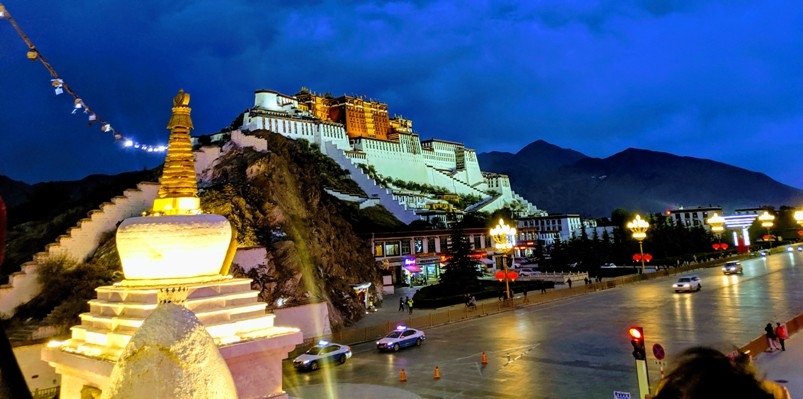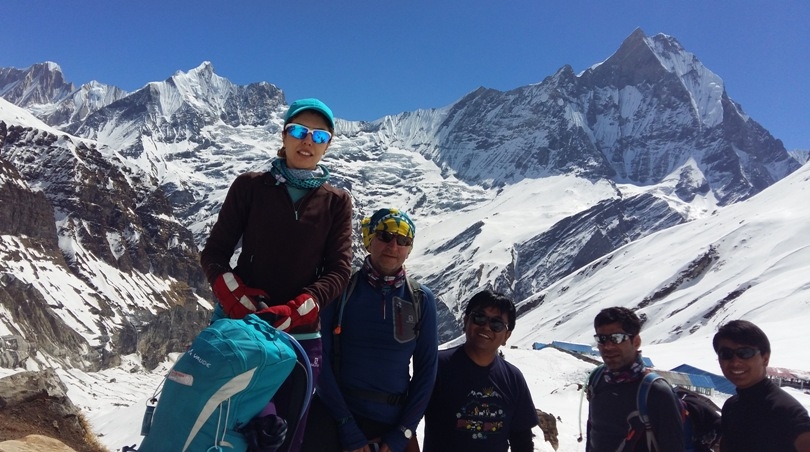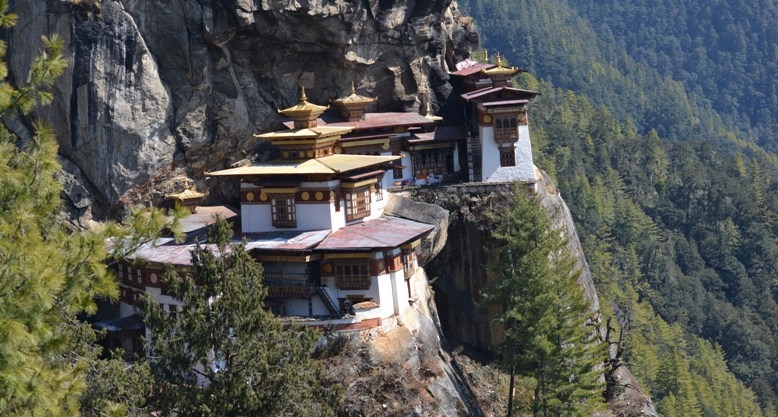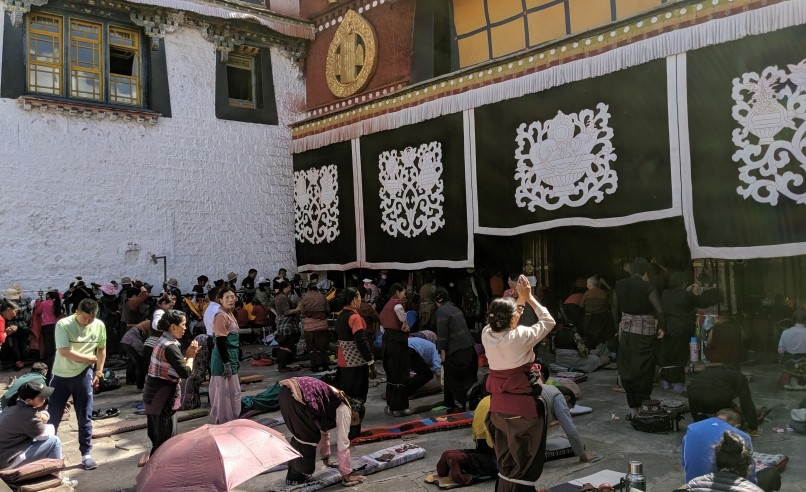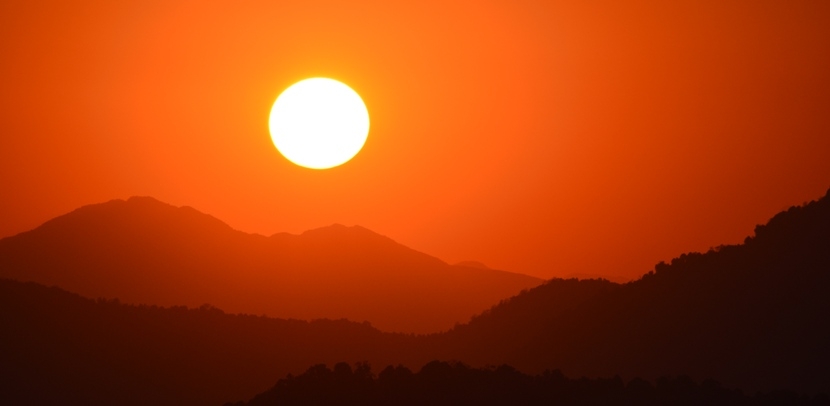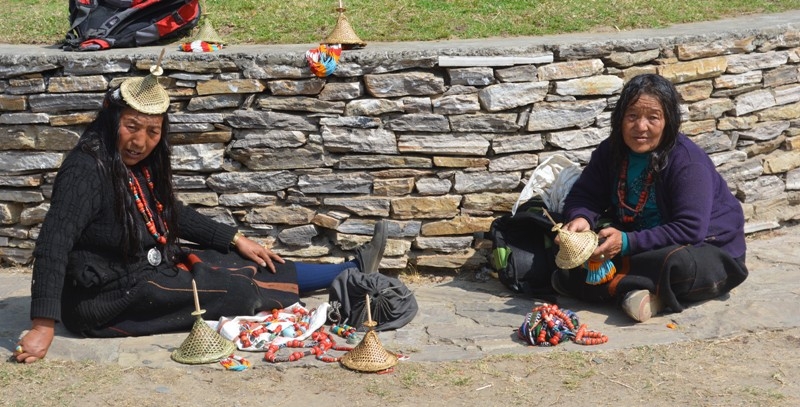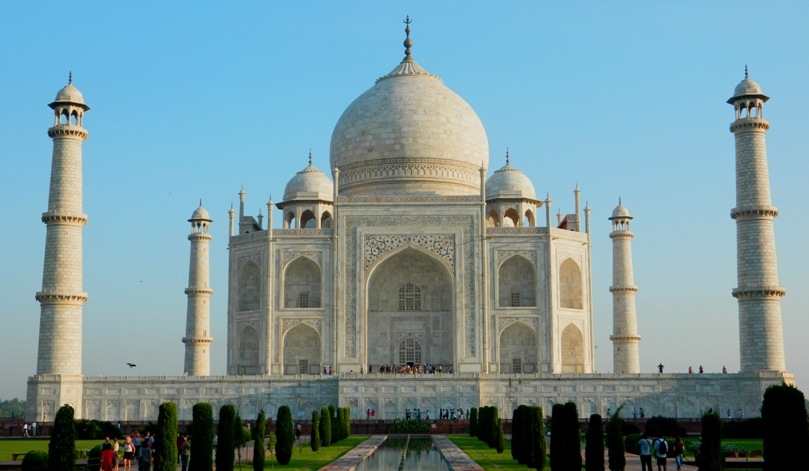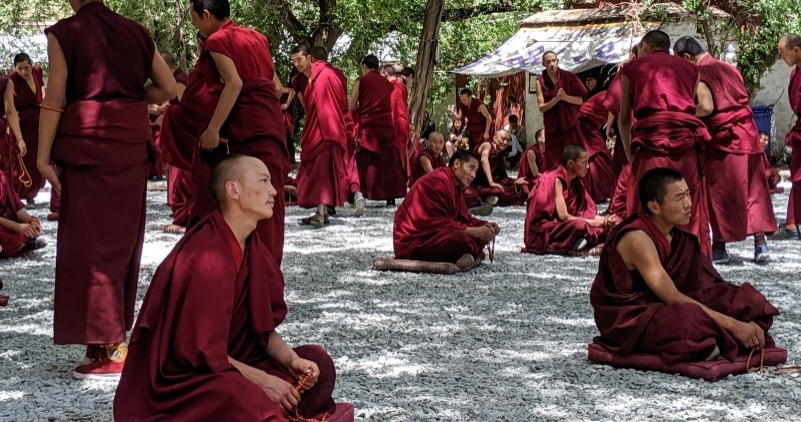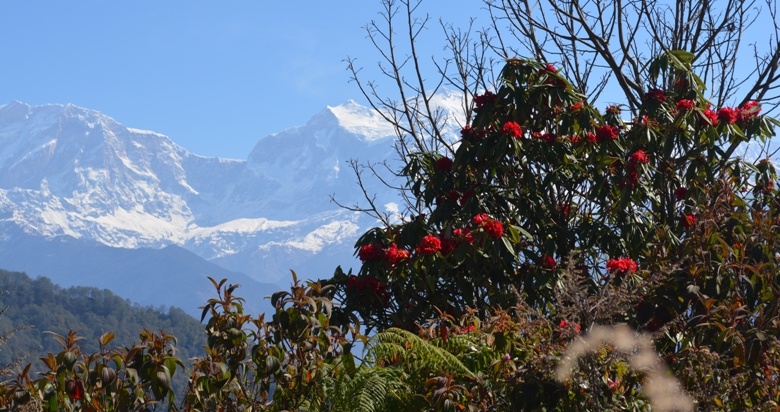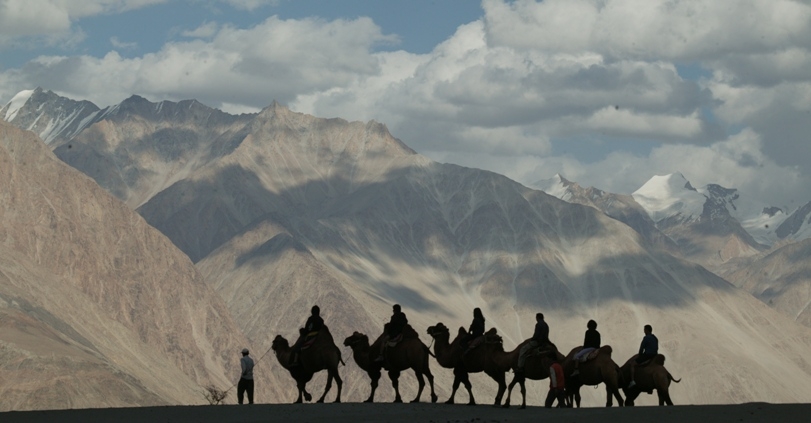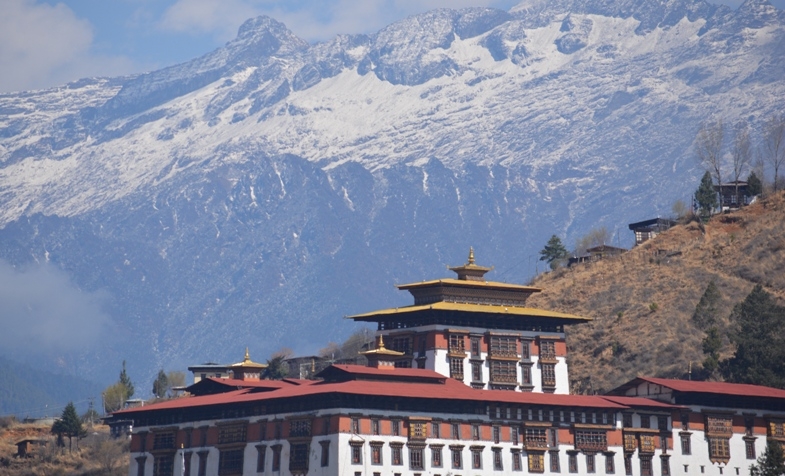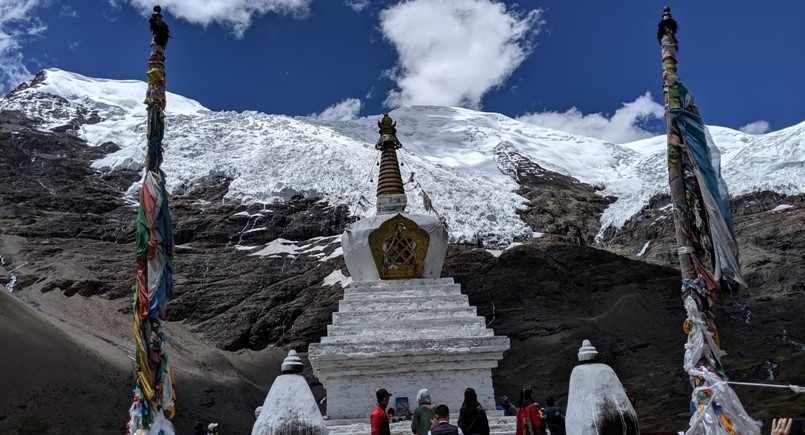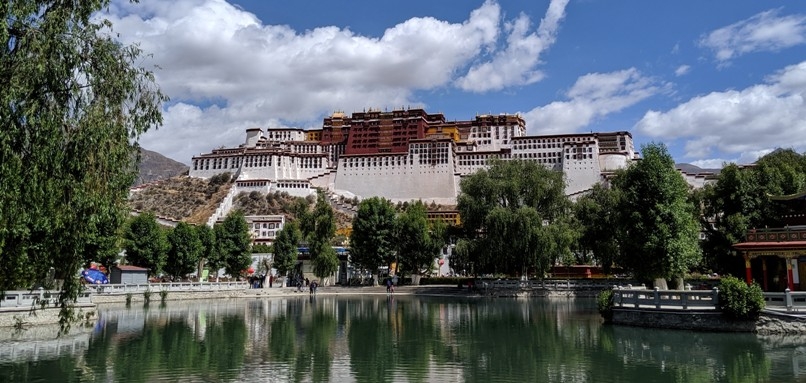This tour is a very good introduction to understand cultural as well as natural heritage of India. During the course of the tour you will visit Delhi, the capital of India, a cultural melting pot, where history has seamlessly given space to modernity without losing its identity. Agra, home to one of eight wonders of the world, the Taj Mahal. Keoladeo Ghana Bird Sanctuary, which is wintering ground for thousands of migrating birds. Migratory birds start flocking into India from October and they remain in the Sanctuary till end of March. Ranthambhore Tiger Reserve, one of the most popular national parks where Royal Bengal Tigers have taken safe refuse, and Jaipur which tells the tales of valor and grandeur of Rajputana or the present-day Rajasthan. You will also get to observe how man and wildlife have peacefully coexisted while doing a Leopard safari at one of edges of the city.
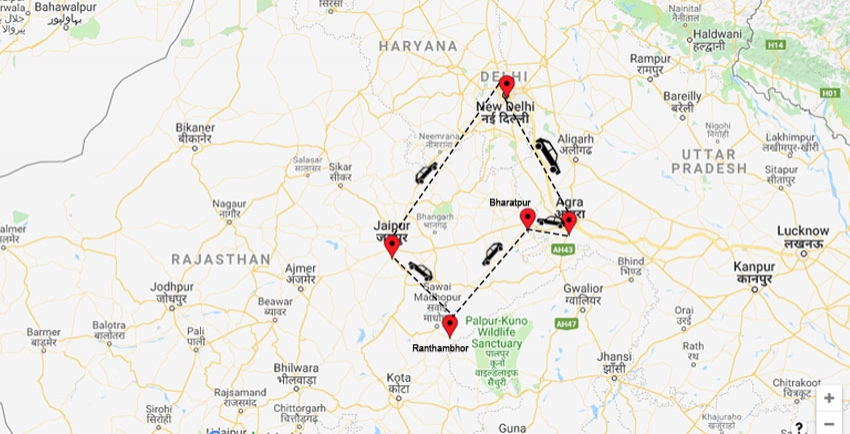
- Day 01 Arrive Delhi
- Day 02 Full day sightseeing tour in Delhi
- Day 03 Overland Delhi-Agra
- Day 04 Full day tour in Agra
- Day 05 Overland Agra to Bharatpur
- Day 06 Full day birding Bharatpur
- Day 07 Drive Bharatpur to Ranthambore
- Day 08 Jungle activities in Ranthambore
- Day 09 Drive Ranthambhore- Jaipur
- Day 10 Full day tour in Jaipur
- Day 11 Jaipur
- Day 12 Jaipur to Delhi - U.S. or extend your trip
Day 01 Arrive Delhi
Upon arrival in Delhi, you will be met and transferred to hotel.
Overnight in Delhi.
Day 02 Full day sightseeing tour in Delhi
Morning leave for a full day city tour of Delhi visiting important sites of Old and New Delhi. In Old Delhi, drive pass Red Fort once a symbol of Mughal might, visit Jama Masjid 16th century mosque and largest in India. Take a rickshaw ride in the narrow alleyways of Chandni Chowk and amazing mixture of history with modern world and visit Raj Ghat cremation site of the “Father of the Nation”.
In New Delhi, visit the Qutab Minar, a 12th century intricately ornamented tower and one of the tallest towers of its time. Wander around the complex visiting ruins of Hindu temples and palaces which once remained here and a 4th century steel pillar which has not developed rust till date. Visit Lutyen’s Delhi, drive past President’s palace and also known as Rashtrapati Bhawan, India gate, a World War I memorial. Lutyen’s city is characterized by wide tree-lined avenues, parks and palaces built for important Indian Princes. Humayun Tomb a 16th century Tomb built in the memory of the second Mughal emperor. This monument is wonderful early example of Mughal architecture and considered as one of the forerunners of the Taj Mahal.
Overnight in Delhi.
Day 03 Overland Delhi-Agra
Today early morning visit Okhla Bird Sanctuary for bird watching. Spread over an area of approx. 4 Sq. Km. Okhla Bird Sanctuary is on the bank of the river Yamuna. Sanctuary supports three main habitat types i.e. wetland, grassland and scrub forest. Of 325 species of birds reported here more than half are winter migrants. Okhla is a very good place to see Yellow-bellied Prinia, Striated Babble, Striated Grassbird and White-tailed Stonechat.
Afternoon drive to Agra. Arrive Agra and check in at hotel with rest of the day at leisure or free for optional activities.
Overnight in Agra.
Day 04 Full day tour in Agra
Early morning optional visit Taj Mahal to witness the monument in the glowing light of rising sun. This most beautiful monument of love was built during 1630 by grieving emperor Shah Jahan in memory of his wife Mumtaj Mahal, is flawless to its conception and execution. It is aptly said that Taj Mahal is not a monument that can be described in words – one has to see it to experience it.
Later in the morning visit Agra Fort - foundation led by Emperor Akbar in 1565 AD, four of the mighty Mughal rulers controlled their vast empire from here. Wander around the palaces built by successive emperors. The most famous are Jahangiri Mahal, Khass Mahal, Diwan-i-Khass, Diwan-i-Am, Machchhi Bhawan and Moti Masjid, which represent the excellence of Mughal architecture. Fort also serves as a vantage point to view Taj Mahal and it is believed that Emperor Shah Jahan spent his last days in exile watching the Taj Mahal from here.
Afternoon visit Itmad-ud-daulah Tomb. This tomb was built by Begam Nur Jahan wife of Jahangir, in the memory of her father Mirza Ghiyas Beg one of generals in Mughal army, who had been given the title of Itmad-ud-daulah (pillar of the state). Primarily built from red sandstone with marble decorations, this monument also elegantly displays pietra dura inlay which is considered to be one of the fore runner of the Taj Mahal.
Optional visit to Taj Mahal to witness the monument changing its mood with light of setting sun (entry fees to be paid extra).
Overnight in Agra.
Day 05 Overland Agra to Bharatpur
Morning drive to Bharatpur and en route visit to the deserted city of Fatehpur Sikri. This exquisite city built by Akbar the Great in 1569 was abandoned 14 years after its creation due to lack of potable water. Built mostly in red sandstone, its palaces inside are testimony to brilliant fusion architecture and they are at an ultimate state of preservation.
Arrive Bharatpur and check in at hotel.
Afternoon visit Keoladeo Ghana National Park for birding. You will do most of your birding on foot and on cycle rickshaw.
Keoladeo Ghana National Park (UNESCO World Heritage Sites) is one of the finest heronries in the world. A natural depression of some 28 sq. km possibly flood plains of Yamuna, this national park boasts of some 425 species of birds. Park is haven for ducks and waders and the last known wintering ground in India for the central population of the Siberian Crane apart from many migratory birds coming from places like Europe, China and Tibet that takes refuse here every winter. This park is breeding site for Painted Stork, Purple Heron, White Ibis, Eurasian Spoonbill and the Sarus Crane largest bird in India and the biggest flying bird in the world.
One should expect to see the wetland residents such Eurasian Wigeon, Cotton Pygmy Goose, Great Crested Grebe, Common Snipe, Black-tailed Godwit, Spotted Redshank, Temminck's Stint, Kentish Plover, Northern Lapwing, Sarus Crane, Black-necked Stork and Pheasant-tailed Jacana etc. Amongst the terrestrial Blue Cheeked Bee-eater, Wryneck, Grey-capped Pygmy Woodpecker, Oriental Skylark, Marshall's Iora, Striated Babbler, Cetti's Bush Warbler, Clamorous Reed Warbler, Rain Quail, Chestnut Bellied Sandgrouse, Bluethroat and nightjars like Savanna and Indian Nightjar are seen here. Greater Spotted Eagle, Short-toed Eagle, Marsh and Montagu's Harrier are some raptors one can spot here.
Bharatpur is also a safe haven for several endangered avifauna such as the White-bellied Heron, Greater Flamingo, Spotbilled Pelican, Greater Adjutant, Red-necked Grebe, Pied Avocet, Curlew Sandpiper, Ruddy Kingfisher, Spotted Crake etc.
Apart from avifauna, it is good place to see Indian Rock Python. Soft-shell Turtles, Monitor Lizards, Fishing Cat and Porcupine other attractions of the park. Other mammals here are Spotted Deer, Sambar, Nilgai, Blackbuck, Striped Hyena and Jungle Cats.
Overnight in Bharatpur.
Day 06 Full day birding Bharatpur
Full day birding in Keoladeo Ghana National Park.
Overnight in Bharatpur.
Day 07 Drive Bharatpur to Ranthambore
Morning drive to Ranthambhore. Arrive Ranthambhore and check at hotel.
Afternoon game drive in Ranthambhore National Park. Nestled in the confluence of Vindhyas and Aravali range covering an area of 400 sq. km., Ranthambhore Tiger Reserve derives its name from a historic 1000 years old fort that lies on top of the hills. Started by Jaipur Maharaja as a hunting preserve it now is undoubtedly one of finest tiger reserves in India. Dotted with hundreds of small monuments all over the park scenic Padam Talao, Malik Talao and Raj Bagh, with the spectacular fort in the background adds to the picturesque landscape of the park. Dry deciduous forest type and sparse undergrowth makes game viewing easier here. Tiger dominates the list of predators here followed by leopard, very elusive Caracal and Jungle Cat. The prey species includes Chital, Sambar, Nilgai (Blue Bull), Chinkara Gazelles. Omnivorous complete the list with Wild Boar and Sloth Bear. Scavengers like Striped Hyena, Jackal, Mongoose and the Common Fox are also seen here. Some of the other wildlife seen here are Marsh Crocodile and Common Langur etc.
Bird checklist of Ranthambhore is over 300 species. Some of the species found here are Blyth’s Reed Warbler, Common Nightjar, Rufus-tailed Shrike, Black Partridge, Sirkeer Malkhoa, Painted Spurfowl, Blue-breasted Quail, Crested Bunting, Rain Quail, Variable Wheatear, Lesser Spotted Eagle, Bonelli's Eagle, Changeable Hawk Eagle, Tickell's Blue Flycatcher, Brown Fish Owl, Collared Scops Owl etc.
Overnight at hotel.
Day 08 Jungle activities in Ranthambore
Morning and evening game drive in Ranthambhore National Park.
Overnight in Ranthambhore.
Day 09 Drive Ranthambhore- Jaipur
Morning game drive in Ranthambhore National Park.
Afternoon drive to Jaipur. Arrive Jaipur and check in at hotel with rest of the day at leisure or free for optional activities.
Overnight in Jaipur.
Day 10 Full day tour in Jaipur
Morning proceed on an excursion to Amber Fort - ancient capital of Kachhawaha Rajputs rulers of Jaipur, Amber guarded one of the important defiles from invading enemies. Wander inside the Fort to watch extravagant Palaces to witness the opulence of Rajput royal lifestyle, among which summer palace, winter palace and mirror palace etc. are the most popular. Climb atop the forts ramparts on elephant back. While returning, stop at Jal Mahal or the water palace a hunting lodge in the middle of Man Sagar Lake.
Afternoon proceed sightseeing tour of Jaipur. Visit City Palace - official residence of the present royal family City Palace covers a large area divided into a series of courtyards, gardens and buildings. A part of this Palace is a now a museum housing Armoury, Textiles and Artifacts. City Palace is delightful blend of Mughal and traditional Rajasthani architecture. Jantar Mantar is a 17th century astronomical observatory, an excellent example of the marvelous precision wherein each construction has a specific purpose to measure the position of stars, altitudes and azimuths or calculating eclipses and some of them still work.
Also stop at Hawa Mahal during the course of the tour. A five story facade in red sandstone with 953 small windows, Hawa Mahal (Palace of Winds) forms part of the City Palace and extends to Zenana ( Women's chambers). It was built with an intention to allow royal ladies to observe everyday life on the street below without being seen. However, today it has become the emblem of Jaipur.
Overnight in Jaipur.
Day 11 Jaipur
Morning and evening Leopard Safari in Jhalana. Spread over an area of 20 sq km in outskirts of Jaipur city, Jhalana Leopard Safari Park is home to a thriving leopard population. Due to high cat density Jhalana slowly is becoming a favorite destination to spot leopards in in its natural habitat. It is a classic example of coexistence of man and the wildlife. Game viewing is done on a open jeep. Apart from Leopard, Jhalana has other attractions such as Striped Hyna, Desert Fox, Golden Jackal, Chital, Indian Palm Civets etc.
Overnight in Jaipur.
Day 12 Jaipur to Delhi - U.S. or extend your trip
Transfer to airport and fly back to U.S. or extend your trip to Bhutan, Nepal or Sri Lanka.
